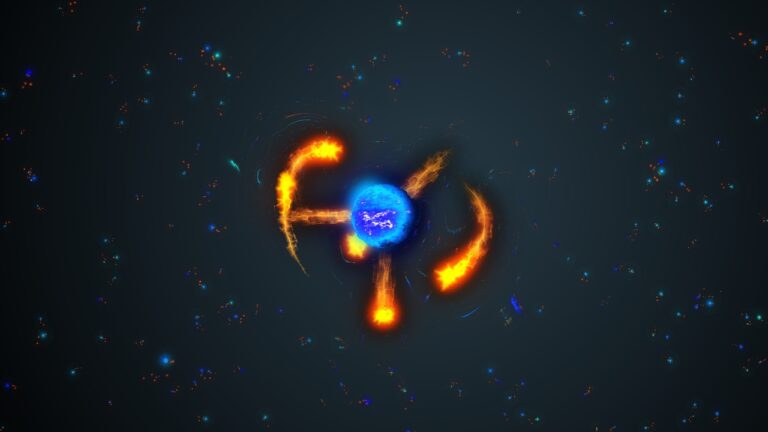The US Department of Energy has announced a triumph achieved by the National Ignition Facility (Nif) at Lawrence Livermore National Laboratory. Researchers have successfully performed a nuclear fusion reaction, producing more energy than was needed to start the experiment.
This is an important development in a field that has been attracting the curiosity of scientists for many years. And that could radically transform the way electricity is produced.
Table of Contents
Nuclear fusion, the experiment
Dreaming of reproducing nuclear fusion, the process that makes stars shine, but in a controlled way, is a goal that various laboratories and start-ups are pursuing.
Everyone knows the recipe for achieving it. Simply trigger a nuclear fusion reaction in the short term, as with the H-bombs. The Nif experiment is essential to turn this principle into a peaceful resource, capable of maintaining constant and stable fusion.
To do this, it is necessary to produce a plasma in large quantities at very high temperatures. Which does not burn everything around it and does not dissipate heat.
In the various experiments carried out to date, the goal of producing more energy than is needed to trigger nuclear fusion has never been achieved.
The Nif results of the nuclear fusion experiment
On 5 December 2022, researchers at the Nif 192 laboratories performed an experiment in which they detonated a cylinder the size of a pencil point, containing frozen hydrogen. From the detonator, in less than 100 trillionths of a second, an energetic force of 2.05 megajoules – equivalent to about half a kilogram of TNT – was released, triggering a nuclear fusion reaction. The reaction produced a stream of neutron particles with the energy equivalent of 1.5 pounds of TNT.
Lawrence Livermore National Laboratory has achieved a remarkable result. But the director himself says it will still be several decades before we have a working fusion power plant.
What is nuclear fusion
For more than 4.5 billion years, the Sun has been illuminating and heating the Earth. The source of energy is the process of nuclear fusion. This includes many reactions that take place in the stellar core, where the temperature is 15 million degrees and the pressure is about 300 billion atmospheres.
There, hydrogen atoms come together to form helium nuclei. The mass of the resulting helium is slightly less than that of the two initial hydrogen atoms, and the missing mass becomes energy according to the law discovered by Einstein (E = mc2). By exploiting the relationship between mass and energy, the Sun is able to generate heat very efficiently. Einstein’s law states that multiplying mass by ‘c2’ (the speed of light squared). This is a very small amount of matter generates very large amounts of energy.
For several years now, the aim of science has been to reproduce the same reactions as in nature in the laboratory. If scientists succeeded, we would have clean energy available in large quantities. Thus avoiding polluting energy sources such as coal, oil and natural gas.
Another advantage would be the minimal amount of radioactive waste that would have a limited lifespan, compared to the nuclear power plants used now. These, in fact, remain radioactive for a very large number of years.
Prospects for the future
According to American scientists, the challenge of nuclear technology is to make it work efficiently even for an electricity company. To achieve this, the first difficulty is to apply these experiments to a nuclear reactor, while the second is to convert the heat produced into electricity.
To achieve its result, Nif had to use 192 gigantic lasers, usually used to simulate atomic weapon explosions. The scientific result obtained is certainly very important, but it is unlikely to have any immediate application.
Clean nuclear and greener energy
It is unlikely that we will see energy produced by nuclear fusion coming out of electrical sockets before the middle of the century. This is not surprising, as energy sources such as coal, gas and oil have taken decades to enter the market.
In the 1960s, Russian physicist Lev Arcimovič declared that nuclear fusion would be ready when society needed it. So far, however, there has been very little investment in alternative energies, from renewables to nuclear fusion. However, the war in Ukraine and climate change have accelerated the process in the search for alternative, clean energy sources.
The limits of the US experiment
Experts have concluded that the laser technology used at Nif is not as promising as others, such as the Tokamaks used in Italy and Europe. This depends from the fact that the energy hitting the target is only part of the energy required, as the 192 lasers powered by Nif, although more powerful than any other in the world, are among the least efficient. In fact, 300 megajoules are necessary to operate the lasers. The result from the US is still important, but considering this information, it can be put into perspective.
Read also: Can nuclear energy be considered “clean”? The pros and cons












